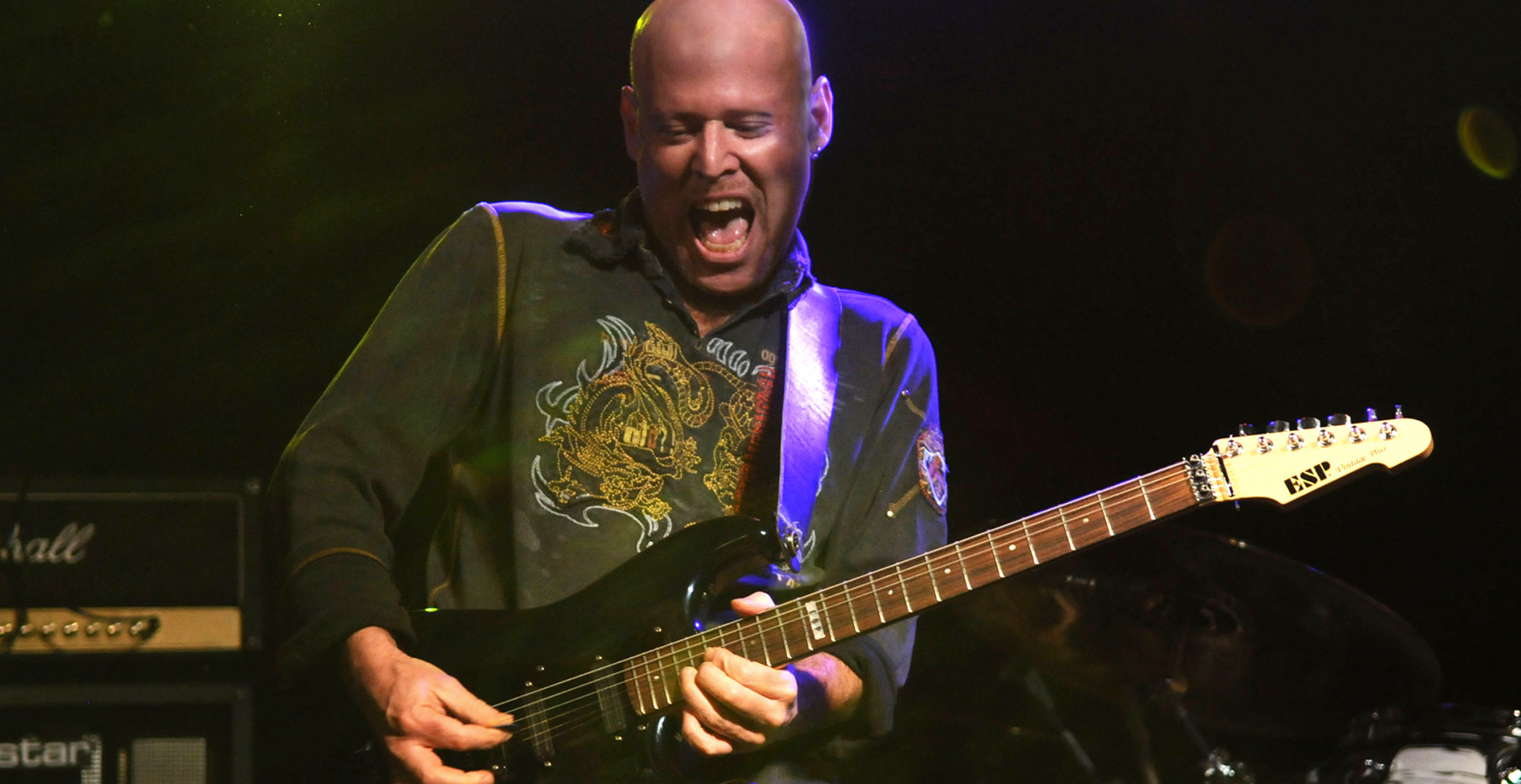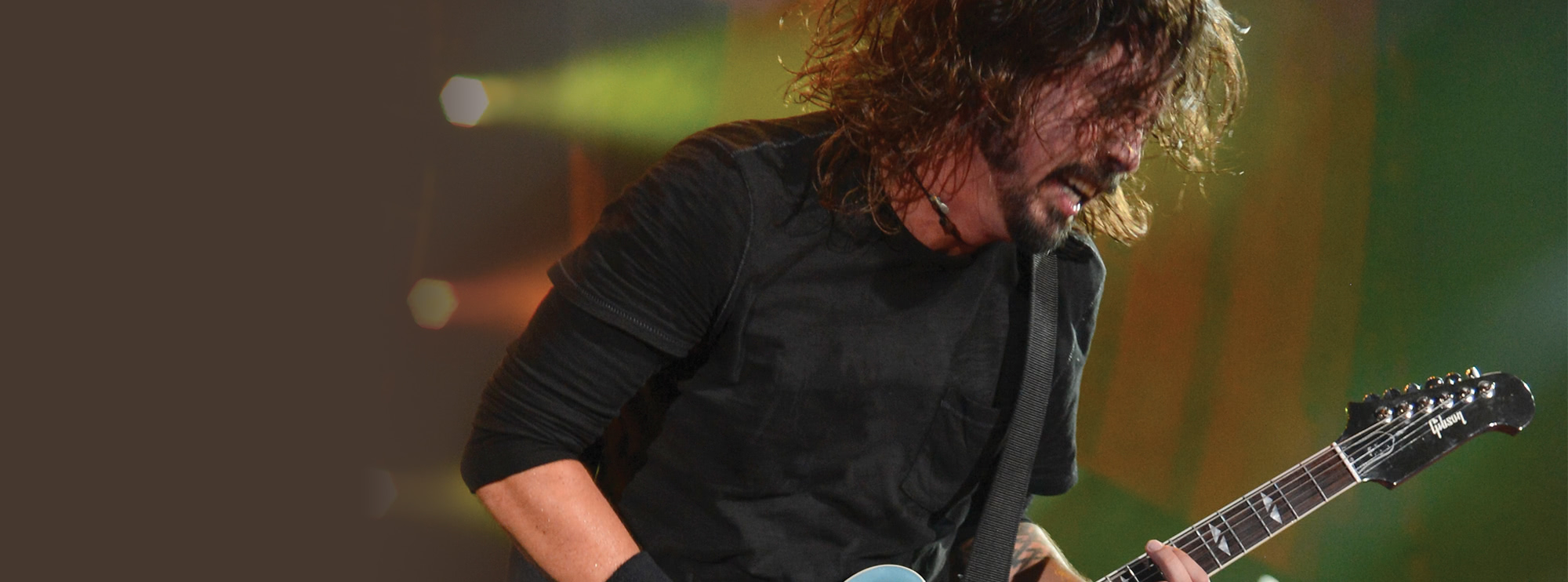Physical Graffiti by Led Zeppelin: A Guitarist's Perspective
"Physical Graffiti," released in 1975, is the sixth studio album by the legendary rock band Led Zeppelin. This double album is a testament to the group's musical prowess and features a wide variety of styles and genres. As guitarists, we can't help but marvel at the work of the band's lead guitarist, Jimmy Page.
In this guitar lesson course, LickLibrary veteran, Danny Gill walks you through the many highlights of each song from the rock giants one phrase at a time, including Jimmy Page’s legendary guitar riffs and lead lines from the tracks; “Trampled Under Foot” and “In My Time Of Dying”, to the iconic “Kashmir”.In this article, we will examine the guitar aspects of each track, analysing guitar solos and discussing Page's contributions to the album.
1. Custard Pie
The opening track, "Custard Pie," sets the tone for the album with its heavy, driving rhythm and a riff that uses a power chord progression. Page employs the Mixolydian mode for the solos, which adds a bluesy feel to the song. Techniques such as slides, string bending, and vibrato can be found throughout the solos. The track showcases Page's unique style and his ability to blend rock and blues elements seamlessly.
2. The Rover
"The Rover" is an epic rock song that features a memorable, catchy riff. The guitar work in this track is characterized by the use of power chords, palm muting, and a variety of lead techniques, such as string bending and alternate picking. The guitar solo is played in the A minor pentatonic scale, and Page employs a mix of techniques, including slides and hammer-ons, to create a fluid, expressive sound.
3. In My Time of Dying
"In My Time of Dying" is a blues-inspired track that features a slide guitar played in open G tuning (DGDGBD). Page masterfully employs slides, string bending, and vibrato to create a haunting and emotional atmosphere. The solos are played using the blues scale, and Page's use of syncopated rhythms adds to the song's intensity.
4. Houses of the Holy
"Houses of the Holy" is a hard rock track with a catchy, upbeat riff. The guitar work includes the use of power chords, palm muting, and alternate picking for a driving rhythm. The guitar solo, played in the A Mixolydian mode, features techniques such as slides, hammer-ons, and pull-offs, creating a fluid and melodic sound. Page's ability to combine rock and funk elements in this track further showcases his versatility as a guitarist.
5. Trampled Under Foot
"Trampled Under Foot" is a funk-infused rock track with a driving rhythm and an infectious groove. The main riff consists of power chords and palm muting techniques, while the guitar solos make use of the E minor pentatonic scale. Page employs techniques such as string bending, vibrato, and alternate picking to create a dynamic, expressive sound.
6. Kashmir
"Kashmir" is one of Led Zeppelin's most iconic tracks, featuring a mesmerising, Eastern-influenced riff. The guitar is tuned to DADGAD, an open Dsus4 tuning that contributes to the song's unique sound. Page uses power chords, arpeggiated chord progressions, and a mix of alternate picking and finger-picking techniques to create the song's hypnotic rhythm. The solos are played using the D Mixolydian mode, and Page's use of string bending and vibrato techniques adds to the track's exotic atmosphere.
7. In the Light
"In the Light" is a progressive rock track that features an eerie, haunting intro played with a bowed guitar. The song then transitions into a more conventional rock structure, with Page using power chords, palm muting, and alternate picking to create a driving rhythm. The guitar solos make use of the E minor pentatonic scale, with Page employing techniques such as string bending, vibrato, and legato to create a fluid, expressive sound.
8. Bron-Yr-Aur
"Bron-Yr-Aur" is an acoustic instrumental track that showcases Page's finger-picking skills. The song is played in an open C6 tuning (CACGCE), and features finger-picking and Travis picking techniques. Page's ability to create intricate, melodic patterns using these techniques highlights his mastery of the acoustic guitar.
9. Down by the Seaside
"Down by the Seaside" is a laid-back, melodic track that features a blend of acoustic and electric guitars. The song showcases Page's ability to create a relaxed, atmospheric sound using finger-picking and arpeggiated chord progressions. The guitar solos make use of the G major scale, with Page employing techniques such as slides and string bending to create a smooth, melodic sound.
10. Ten Years Gone
"Ten Years Gone" is an emotional, introspective track that features a mix of acoustic and electric guitars. Page's use of arpeggiated chord progressions and finger-picking techniques creates a melancholic, atmospheric sound. The guitar solos are played using the A major scale, with Page employing a variety of techniques, including string bending, vibrato, and hammer-ons, to create an expressive, emotional sound.
11. Night Flight
"Night Flight" is a lively, upbeat track that features a catchy, driving rhythm. The guitar work in this song is characterised by the use of power chords, palm muting, and alternate picking techniques. The guitar solo is played using the A minor pentatonic scale, and Page employs techniques such as slides, string bending, and vibrato to create a dynamic, expressive sound.
12. The Wanton Song
"The Wanton Song" is a hard-hitting rock track with a driving, aggressive riff. The guitar work includes the use of power chords, palm muting, and alternate picking for a powerful rhythm. The guitar solo, played in the E minor pentatonic scale, features techniques such as string bending, vibrato, and hammer-ons, creating a fluid, expressive sound.
13. Boogie with Stu
"Boogie with Stu" is a fun, upbeat track that pays homage to the boogie-woogie piano style. The guitar work in this song is characterized by the use of double-stops and slides to create a lively, rhythmic sound. Page's ability to blend rock and boogie-woogie elements showcases his versatility as a guitarist.
14. Black Country Woman
"Black Country Woman" is a bluesy acoustic track that features a mix of finger-picking and Travis picking techniques. The song is played in standard tuning, and the guitar work is characterized by the use of slides, hammer-ons, and pull-offs to create a fluid, expressive sound. Page's mastery of acoustic guitar techniques is evident in this track.
15. Sick Again
"Sick Again" is a hard rock track that features a heavy, driving riff. The guitar work includes the use of power chords, palm muting, and alternate picking to create a powerful rhythm. The guitar solos are played using the A minor pentatonic scale, with Page employing techniques such as string bending, vibrato, and slides to create a dynamic, expressive sound.
Jimmy Page: Lead Guitarist and His Contribution to Physical Graffiti
Jimmy Page is the mastermind behind Led Zeppelin's sound and is considered one of the greatest guitarists of all time. His innovative playing and unique style are evident throughout "Physical Graffiti." Page's ability to seamlessly blend various genres and styles, from rock and blues to Eastern influences, showcases his versatility and creativity.
Throughout the album, Page employs a wide range of guitar techniques, such as alternate picking, finger-picking, Travis picking, power chords, palm muting, slides, hammer-ons, pull-offs, string bending, vibrato, and more. His mastery of these techniques allows him to create a diverse range of sounds and emotions, making "Physical Graffiti" a rich and rewarding listening experience for guitarists and music enthusiasts alike.
In conclusion, "Physical Graffiti" is a testament to the talent and versatility of Led Zeppelin, and specifically, Jimmy Page's incredible guitar work. As a guitarist, diving into the techniques and scales used in each song can be both educational and inspiring, offering a deeper understanding of the album and Page's contributions to the world of guitar playing. This album will remain a timeless classic, appreciated by guitarists for generations to come.
Guitar Techniques Used in "Physical Graffiti"
Jimmy Page utilises many techniques in this album, some of the prominent ones are listed below. Check out the links for more detailed info
- Alternate Picking
- Finger-Picking
- Travis Picking
- Power Chords
- Palm Muting
- Slides
- Hammer-Ons
- Pull-Offs
- String Bending
- Vibrato
- Legato
- Double-Stops
- Arpeggiated Chord Progressions
- Open Tunings
- Chromaticism
- Syncopated Rhythms

About The Tutor
Tutor Profile
Danny Gill
Danny Gill is, without a doubt, the most loved tutor by our community. With an incredible array of DVDs and web lessons for LickLibrary covering a wide variety of topics all of which he covers with incredible detail, it's no wonder he carries as much respect as he does. As...




